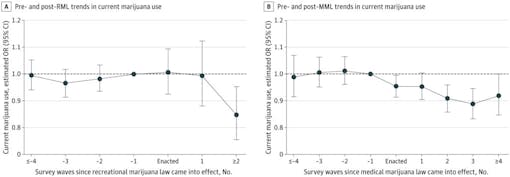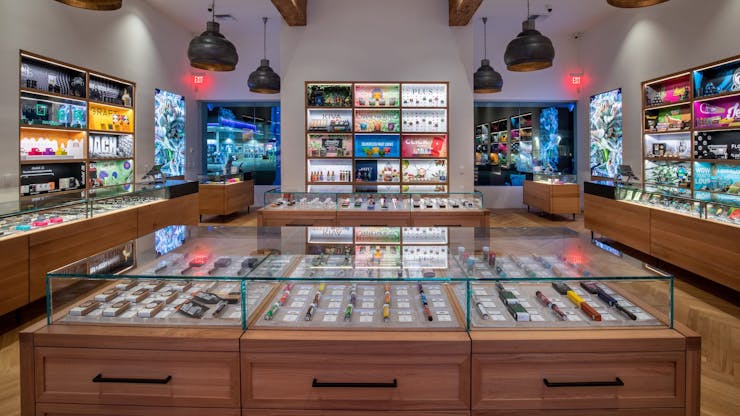Nebraska Gov. Pete Ricketts said in March that he opposed medical cannabis because, ‘if you legalize marijuana, you’re going to kill your kids. That’s what the data shows from around the country.’
Yeah, exactly the opposite of that, Pete.
In a new Research Letter published Sept. 7 in the Journal of the American Medical Association (JAMA), researchers analyzed 28 years’ worth of Youth Risk Behavior Survey (YRBS) data to ascertain whether states that have passed medical or recreational cannabis laws have subsequently seen an increase in cannabis use among US high school students.
Building on a prior study that analyzed YRBS data from 1993-2017, this updated effort offers an expanded view on the subject by adding in results from 2018 and 2019 as well.
Whereas the authors note that the previous study was subject to scrutiny for only utilizing pre-legalization and post-legalization data from seven states total (including but three states with recreational markets), the new study incorporates a far more robust set of data—in some cases multiple waves from different periods of time—from a total of 10 states.
The results, however, are largely the same.

“Based on the pooled YRBS data, and in the fully adjusted models, [recreational marijuana law] adoption was not associated with current marijuana or frequent marijuana use,” the study concluded. “In the fully adjusted models, medical marijuana law (MML) adoption was associated with a 6% decrease in the odds of current marijuana use and a 7% decrease (in the odds of frequent marijuana use.”
In addition, researchers also found that “estimates of the association between the opening of the first recreational dispensary and marijuana use were qualitatively similar” to these numbers, further cementing what a plethora of otherstudies have already shown: that legalizing weed actually leads to a decline in teen use, not an uptick.
While the study’s authors declined to provide a reasoned rationale for what may be responsible for this correlation, their work is complemented by an ever-expanding pool of research that includes a November 2020 report from the Centers for Disease Control and Prevention showing that teens going to the hospital for cannabis-related complaints has declined by 50% and Leafly’s own 2019 review of 42 key studies that found, in part, that teen use is “unaffected specifically [and] declines generally”in states with legalization.
Study does not say why teen use is flat
As for the ‘why’ of it all, compelling factors include the idea that legalized markets exclusively serve adults—versus street markets that sell to children.

… licensed cannabis sellers in Washington tightened up their compliance rate for checking identification from 95% in 2019 to 96% in 2020…
For example, licensed cannabis sellers in Washington tightened up their compliance rate for checking identification from 95% in 2019 to 96% in 2020, according to the Washington State Liquor and Cannabis Board August 5.
(Just for comparison—Washington alcohol seller compliance rates slipped from 85% to 75%, and tobacco seller compliance fell from 90% to 75%.)
Whatever the causes may be: opposing legal cannabis to ‘save the teens’ defies empirical reality.
Someone should inform Gov. Ricketts that it’s prohibitionist talking points that are on life support these days.





